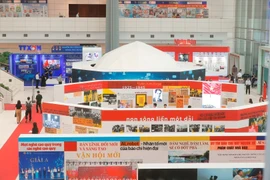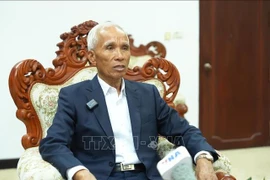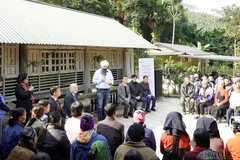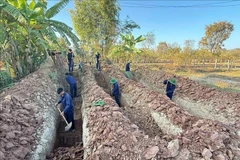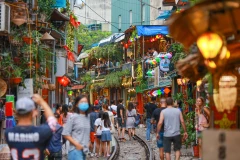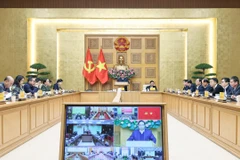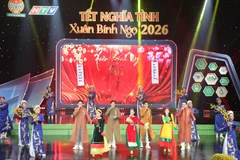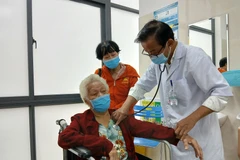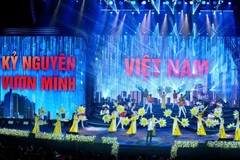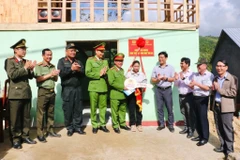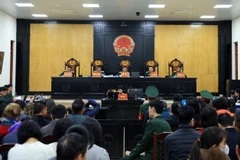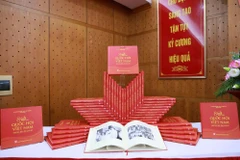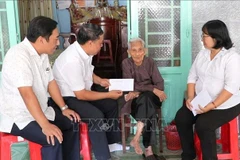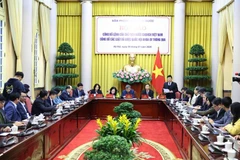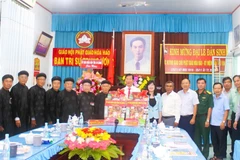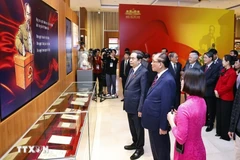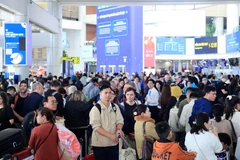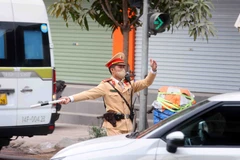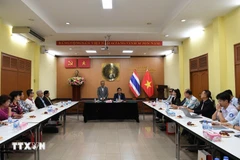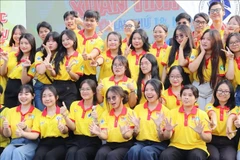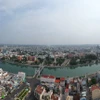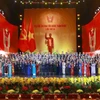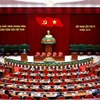Hanoi (VNA) – The year 2025 marks the historic centenary of Vietnam’s Revolutionary Press (1925–2025). From “Thanh nien”, Vietnam’s first revolutionary newspaper founded by Nguyen Ai Quoc (later President Ho Chi Minh) on June 21, 1925, the revolutionary press has remained devoted to its sacred missions -accompanying the nation, serving the Fatherland, and working for the people.
Responding to revolutionary needs
In the early 20th century, as feudal and bourgeois-democratic movements in Vietnam faltered, a new revolutionary path was urgently needed, along with a medium to spread deep, organised, and ideologically driven messages.
On June 21, 1925, Nguyen Ai Quoc launched Thanh nien in Guangzhou, China, as the voice of the Vietnamese Revolutionary Youth League. Its debut marked the start of Vietnam’s revolutionary press and a century-long journey of dedication and service.
From its first issues, Thanh nien outlined its roles -educating, popularising, and mobilising. Its content built political awareness, stirred patriotism, and guided readers towards proletarian ideals.
Later publications - “Tap chi Do (Red Magazine), “Tranh dau “ (Struggle), “Dan chung (The People), “Viet Nam Doc lap” (Independent Vietnam), “Co giai phong” (Liberation Flag), emerged in line with each revolutionary stage. Despite operating underground and facing harsh censorship, they reached broad audiences, demonstrating the resilience, flexibility, and creativity of Vietnam’s revolutionary journalism.
The press played a vital role in popular mobilisation that led to the victory of the 1945 August Revolution and the birth of the Democratic Republic of Vietnam on September 2, 1945.
During the resistance wars against colonial and imperialist forces, the revolutionary press was a special front in the Party’s overall strategy. Under fire, journalists relayed the Party’s policies, motivated the nation, and fought against enemy propaganda. Many joined the frontline effort to support national liberation. Hundreds gave their lives in this mission, becoming symbols of courage and sacrifice.
Journalist Tran Mai Huong, former General Director of Vietnam News Agency, recalled that journalists were present on every battlefield, during every major campaign. Over 500 were killed. That reflects the brutality of war and the dedication of those who documented it. I’ve called them historians who wrote with blood in the flames of war, he said.
The Vietnam News Agency (VNA) endured particularly heavy losses. Over 260 VNA journalists were killed during the nation’s wars. Many others were wounded or chemically exposed. These sacrifices represent profound loss but also a legacy of patriotism, resolve, and heroism among Vietnam’s frontline information soldiers.
After the 1975 reunification, and particularly following the 6th National Party Congress in 1986, Vietnam’s revolutionary press entered a new phase, promoting “Doi Moi” (Renewal) scheme while taking on greater responsibility in oversight, social critique, and celebrating new models and values.
Upholding press as ideological fortress
In the 21st century, amid globalisation, digital information surges, and technological breakthroughs, the press has faced unprecedented opportunities and challenges. Today’s revolutionary press does more than inform; it protects the Party’s ideological foundation, counters false narratives, and reinforces public confidence in truth and justice.
It continues to serve as a “fortress of ideology,” upholding Marxist-Leninist principles and Ho Chi Minh Thought while advancing modern Vietnamese values: patriotism, humanity, creativity, unity, and responsibility. Major campaigns like protecting the Party’s ideological foundation (VNA, People’s Army, Nhan Dan), combating peaceful evolution (People’s Public Security Newspaper), and VTV1’s “Doi dien” (Facing the Issues) remain critical lines of defence in today’s media environment.
The press has also led national dialogue on key issues. During COVID-19, revolutionary journalism became a frontline force, providing timely updates, supporting vaccination strategy, celebrating frontline efforts, and fostering unity and resilience against crisis.

It also actively promotes Vietnam’s global image via international platforms like VietnamPlus (VNA), VTV, Nhan dan Online (English), and VOV. In the digital age, building multi-platform ecosystems is vital for professional, humanistic, and modern journalism.
Despite a later start, many outlets have made major strides. Tuoi tre, VietnamPlus, and VTV Digital have excelled in digital innovation. Tuoi Tre produces short videos on YouTube and TikTok while maintaining in-depth print and online content. VietnamPlus’s multi-language CMS system enables broad distribution across apps, social media, and OTT platforms.
Success now depends on technology integration and audience focus. Digital transformation requires not just investment, but newsroom innovation and professional development. As technology evolves, journalists must meet higher standards, said Do Thi Ngoc Ha, Head of Tuoi tre’s Hanoi bureau.
Embracing a new mission
The Party Central Committee’s Resolution 18-NQ/TW, issued on October 25, 2017, triggered a transformation in press management, streamlining, modernising, and professionalising journalism to improve quality and effectiveness.
The Press Law is also under review to address new digital-era challenges and institutionalise the Party’s policies on the press, especially the vision of 13th Party Congress on building professional, humanistic, and modern journalism. Revisions aim to close regulatory gaps, ensure consistency, and align with the 2013 Constitution.

In celebration of the press’s centenary, the 2025 National Press Festival is taking place in Hanoi, an event of political, cultural, and professional importance, and a national celebration of journalists and public trust in revolutionary journalism.
Speaking at the opening, Nguyen Trong Nghia, Politburo member, Secretary of the Party Central Committee, and Head of the committee’s Commission for Information and Education, and Mass Mobilisation, stated that Vietnam’s revolutionary press has enjoyed a century of glory. But true honour lies in the will to move forward. Today’s event is for remembrance, gratitude, and a collective look ahead.
“I hope every journalist and media agency will lead with renewed thinking, fresh formats, and deeper social impact. Public presence here reflects trust and expectation that revolutionary journalism continues to lead the nation forward.”
As Vietnam enters a new phase of development, journalists are called upon to open new perspectives for the revolutionary Vietnamese press in the 21st century./.


